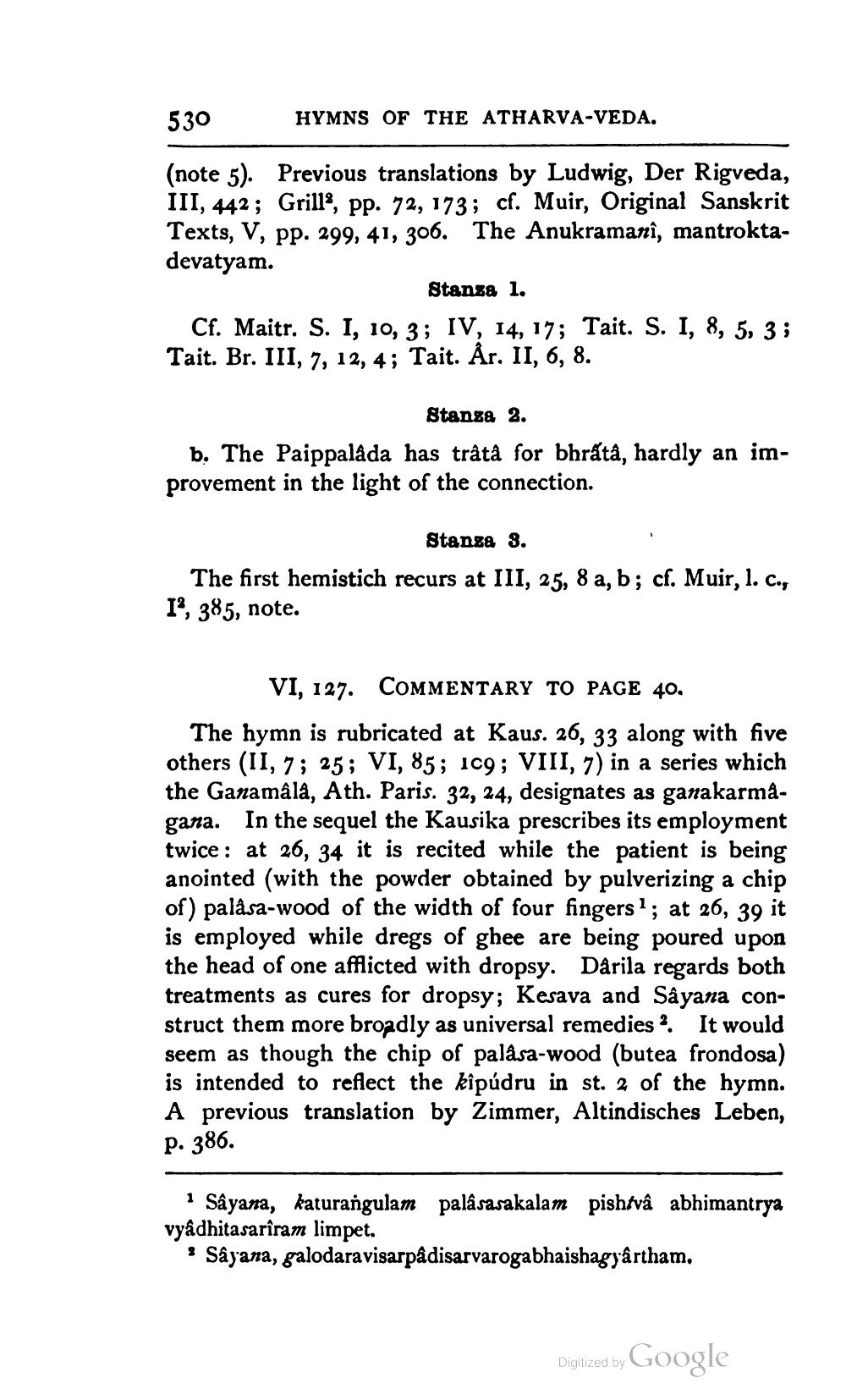________________
530
(note 5). Previous translations by Ludwig, Der Rigveda, III, 442; Grill, pp. 72, 173; cf. Muir, Original Sanskrit Texts, V, pp. 299, 41, 306. The Anukramani, mantroktadevatyam.
HYMNS OF THE ATHARVA-VEDA.
Stanza 1.
Cf. Maitr. S. I, 10, 3; IV, 14, 17; Tait. S. I, 8, 5, 3 ; Tait. Br. III, 7, 12, 4; Tait. År. II, 6, 8.
Stanza 2.
b. The Paippalâda has trâtâ for bhratâ, hardly an improvement in the light of the connection.
Stanza 3.
The first hemistich recurs at III, 25, 8 a, b; cf. Muir, l. c., 12, 385, note.
VI, 127. COMMENTARY TO PAGE 40.
The hymn is rubricated at Kaus. 26, 33 along with five others (II, 7; 25; VI, 85; 109; VIII, 7) in a series which the Ganamâlâ, Ath. Paris. 32, 24, designates as ganakarmâgana. In the sequel the Kausika prescribes its employment twice at 26, 34 it is recited while the patient is being anointed (with the powder obtained by pulverizing a chip of) palâsa-wood of the width of four fingers1; at 26, 39 it is employed while dregs of ghee are being poured upon the head of one afflicted with dropsy. Dârila regards both treatments as cures for dropsy; Kesava and Sâyana construct them more broadly as universal remedies 2. It would seem as though the chip of palâsa-wood (butea frondosa) is intended to reflect the kîpúdru in st. 2 of the hymn. A previous translation by Zimmer, Altindisches Leben, P. 386.
1 Sâyana, katurangulam palâsasakalam pishtvâ abhimantrya vyâdhitasarîram limpet.
Sâyana, galodaravisarpâdisarvarogabhaishagyârtham.
2
Digitized by Google




